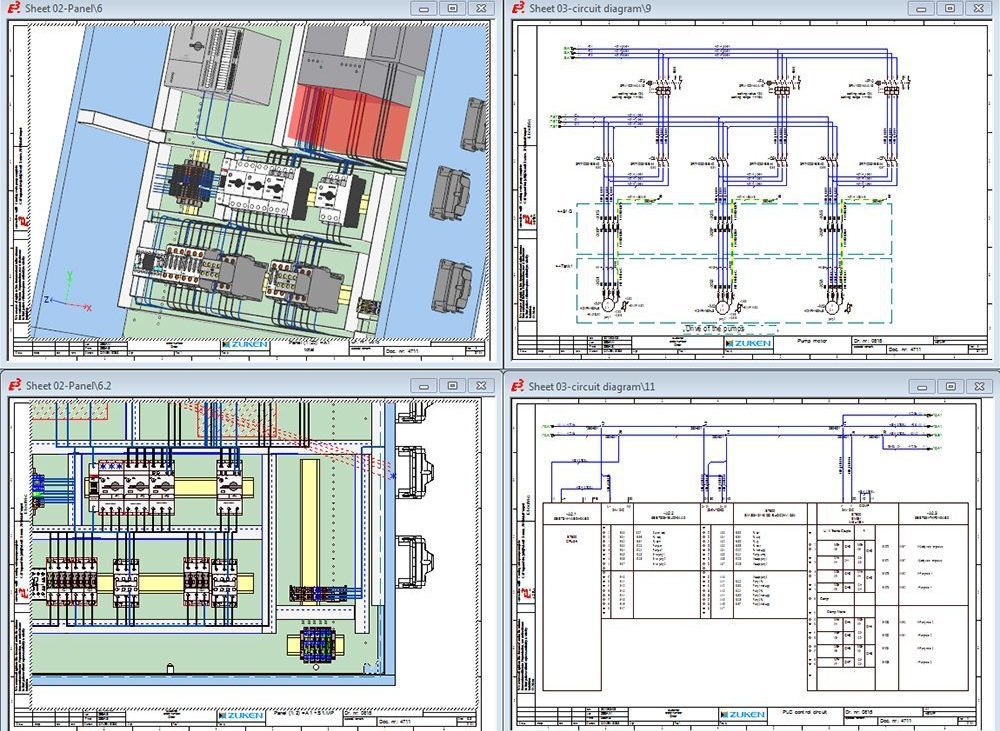Ingenious Electrical Design Providers for Modern Infrastructure
As city settings expand significantly complicated, incorporating innovations such as wise grids and eco-friendly power sources ends up being extremely important. These developments not just guarantee to enhance power intake yet likewise foster strength against future needs.
Significance of Innovative Electric Design
Cutting-edge electric design plays an important function in contemporary infrastructure, influencing not just efficiency however additionally sustainability. As cities progress and the need for power increases, the demand for advanced electrical systems ends up being extremely important. These systems must not only fulfill current needs but likewise expect future growth and technical advancements.
A well-executed electrical design can substantially reduce power intake, therefore lowering functional prices and reducing ecological effect. By incorporating renewable resource sources, such as solar panels and wind turbines, innovative styles can boost energy freedom and durability. Additionally, smart grid technologies permit real-time tracking and monitoring of power circulation, optimizing efficiency and minimizing waste.
Safety and security is one more vital element of electric design. Executing advanced modern technologies and strenuous standards can minimize risks associated with electric failures, making certain a secure setting for citizens and businesses alike. Additionally, ingenious designs help with adaptability, permitting frameworks to integrate arising modern technologies perfectly.
Trick Patterns in Electrical Design
As the landscape of electric design remains to develop, numerous essential patterns are forming the future of the sector. One substantial fad is the integration of wise technology right into electric systems. The spreading of the Net of Things (IoT) has actually allowed real-time tracking and control of electric tools, enhancing performance and helping with predictive upkeep.
Another trend is the expanding focus on modular design. This technique permits adaptable and scalable services, enabling facilities to adapt to altering demands without comprehensive renovations. Furthermore, using innovative simulation devices and Structure Info Modeling (BIM) is ending up being progressively common, streamlining the design process and boosting cooperation amongst stakeholders.
Furthermore, improvements in products scientific research are bring about the growth of lighter, extra long lasting, and energy-efficient elements. This innovation is especially crucial for high-performance buildings and framework tasks.
Lastly, there is a marked shift towards data-driven decision-making - residential electrical design. Leveraging data analytics aids designers maximize systems for efficiency and cost-effectiveness. Together, these patterns signify a transformative era in electric design, boosting capability, sustainability, and resilience in contemporary facilities
Lasting Energy Solutions
Lasting energy remedies are increasingly becoming a critical emphasis in electrical design, reflecting a wider commitment to environmental responsibility and source effectiveness. These remedies aim to lessen ecological impact while maximizing power usage in numerous frameworks, from property buildings to large business facilities.
Among the foremost approaches involves the combination of renewable resource resources, such as solar panels and wind turbines, right into electrical systems. This not only minimizes dependency on fossil gas yet likewise improves energy resilience. Additionally, cutting-edge energy storage systems, such as sophisticated batteries, make it possible for effective monitoring and circulation of energy, making sure that excess power produced throughout height production can be utilized during high demand periods.
Additionally, energy-efficient design techniques are being adopted to improve overall he said system performance. This includes using energy-efficient illumination, a/c systems, and wise building modern technologies that keep track of and adjust power usage based upon tenancy and environmental conditions.
Smart Grid Technologies
The implementation of sustainable energy options normally causes the expedition of smart grid innovations, which play a pivotal function in improving electric systems. Smart grids utilize advanced communication innovations and information analytics to boost the integrity, performance, and sustainability of electricity distribution. By incorporating electronic technology with standard grid framework, these systems promote real-time surveillance, automated control, and improved decision-making capacities.
One of the key features of smart grids is their ability to suit renewable resource sources, such as solar and wind power. This versatility not only decreases dependency on nonrenewable fuel sources however likewise enables an extra decentralized energy manufacturing model. Moreover, smart grids enable need reaction programs, where consumers can change their power usage based on real-time rates, thus advertising energy preservation and reducing peak lots demands.
In addition, clever grid technologies boost grid durability by allowing quicker identification and resolution of interruptions, eventually minimizing downtime. With anticipating upkeep and analytics, energies can enhance and optimize operations service distribution. As areas and cities remain to progress, smart grid technologies are crucial for developing a effective and lasting electrical facilities that fulfills the demands of contemporary culture.

Future-Proofing Framework
To guarantee long-term stability and adaptability, future-proofing facilities is essential in the swiftly developing landscape of electrical design solutions. As innovation advances and power needs shift, it is essential look at here that electric systems are designed with flexibility in mind. This entails including scalable services that can suit future upgrades without demanding comprehensive overhauls.

In addition, sustainability needs to be a cornerstone of future-proofed styles. Making use of renewable resource resources, such as solar and wind, and maximizing energy efficiency lower reliance on fossil gas, aligning with worldwide efforts to battle climate modification.
Verdict
By focusing on sustainability, flexibility, and efficiency, these services attend to the advancing demands of energy systems. The combination of smart grid modern technologies and lasting energy options boosts durability and decreases operational prices.
A well-executed electric design can significantly lower energy intake, consequently decreasing operational costs and reducing environmental effect. By integrating renewable energy resources, such as solar panels and wind generators, ingenious layouts can improve energy independence and strength. Additionally, ingenious power storage space systems, such as advanced batteries, make it possible for effective monitoring and distribution of power, ensuring that surplus energy produced throughout peak manufacturing can be used during high need periods.
Wise grids allow demand response programs, where customers can readjust their power usage based on real-time pricing, thereby promoting power preservation and reducing peak lots demands. (electrical engineering design services)
As innovation developments and energy needs change, it is critical that electrical systems are electrical design services made with flexibility in mind.